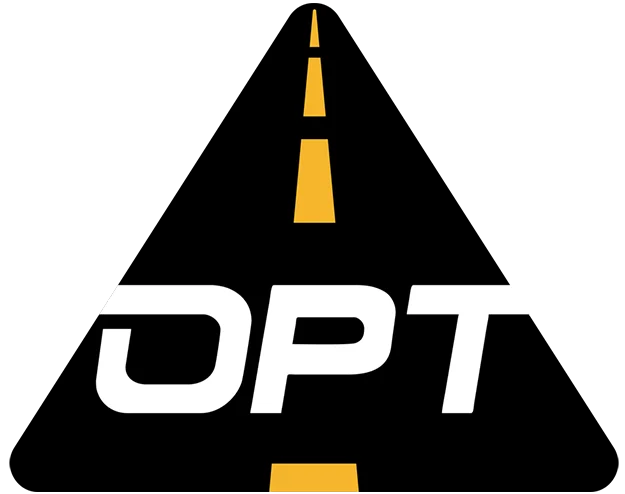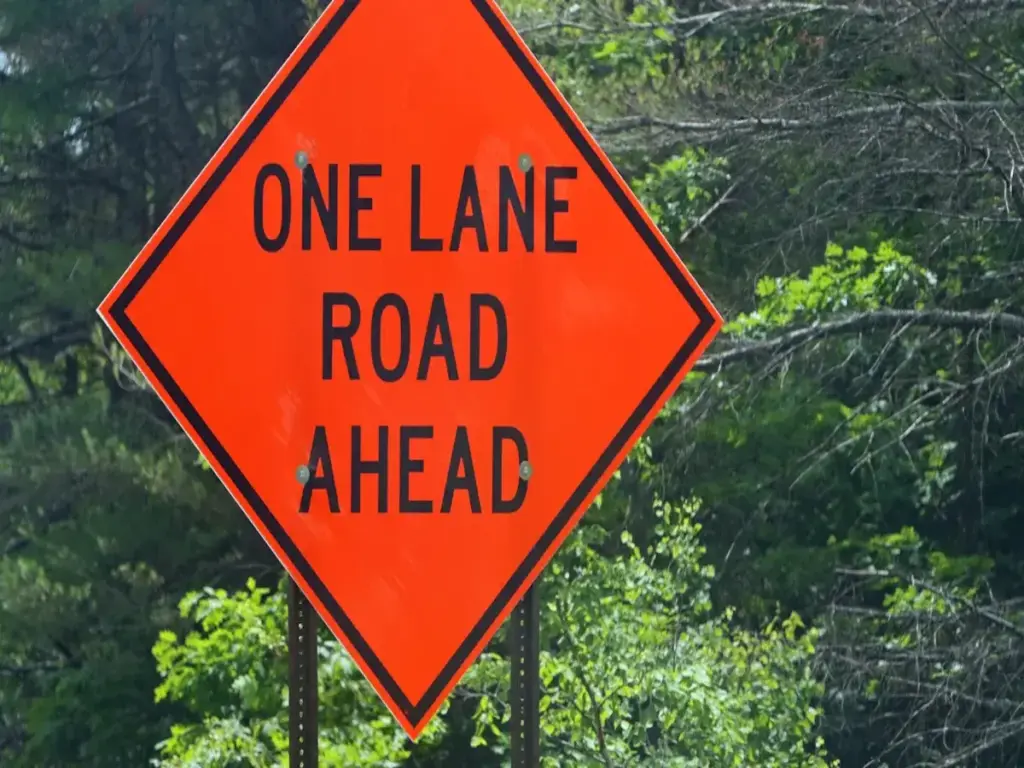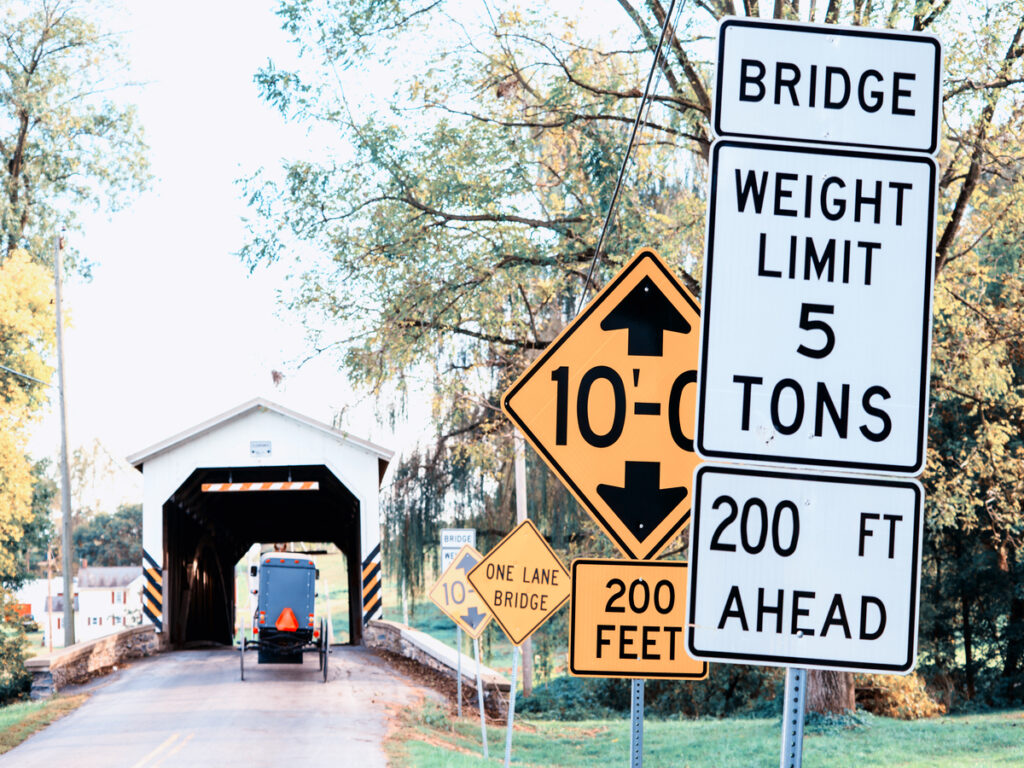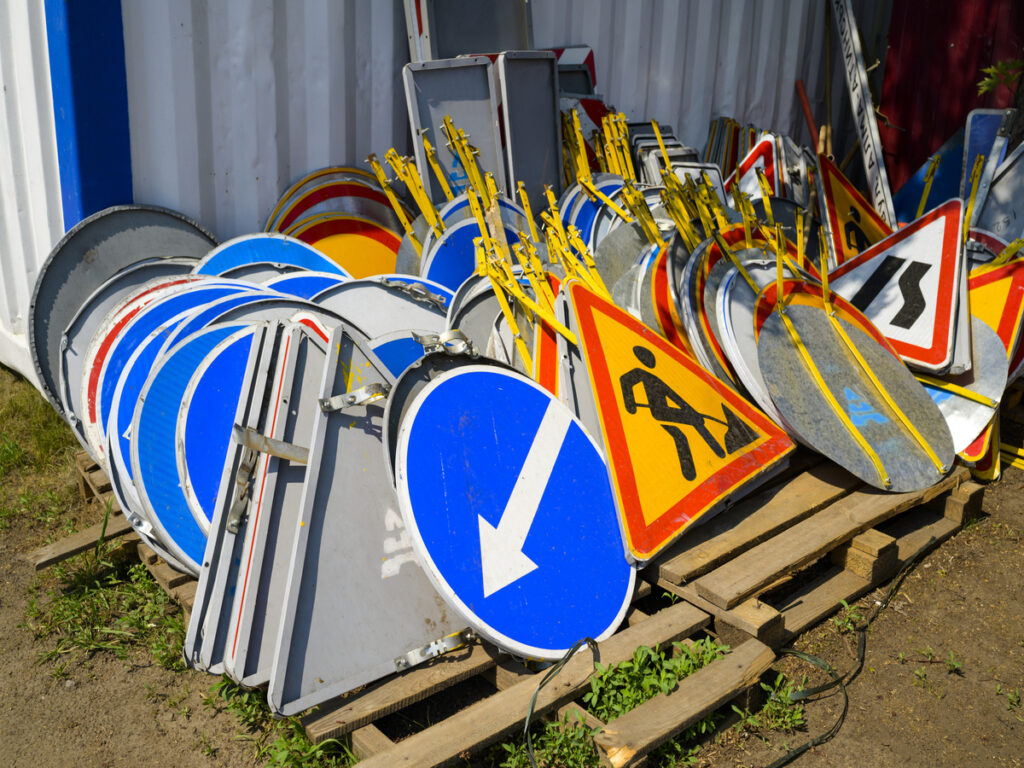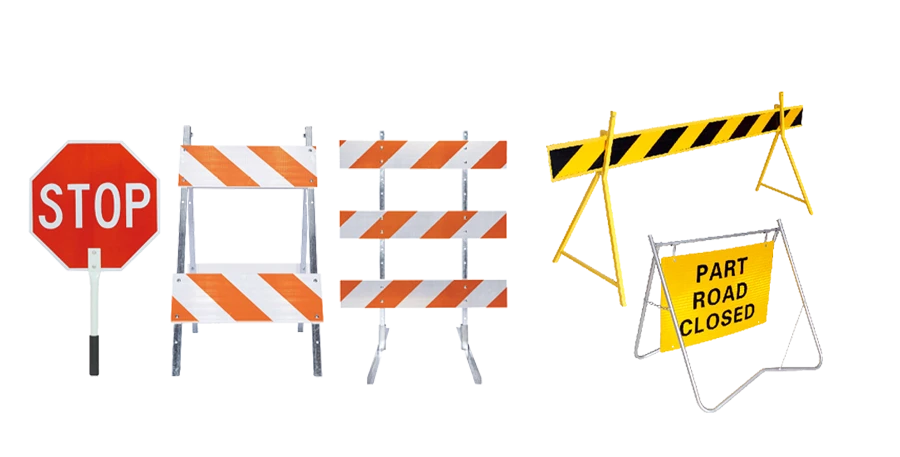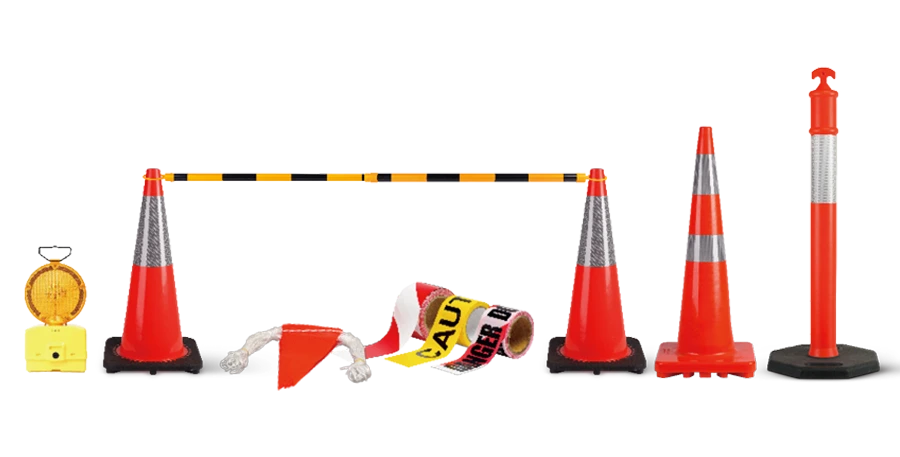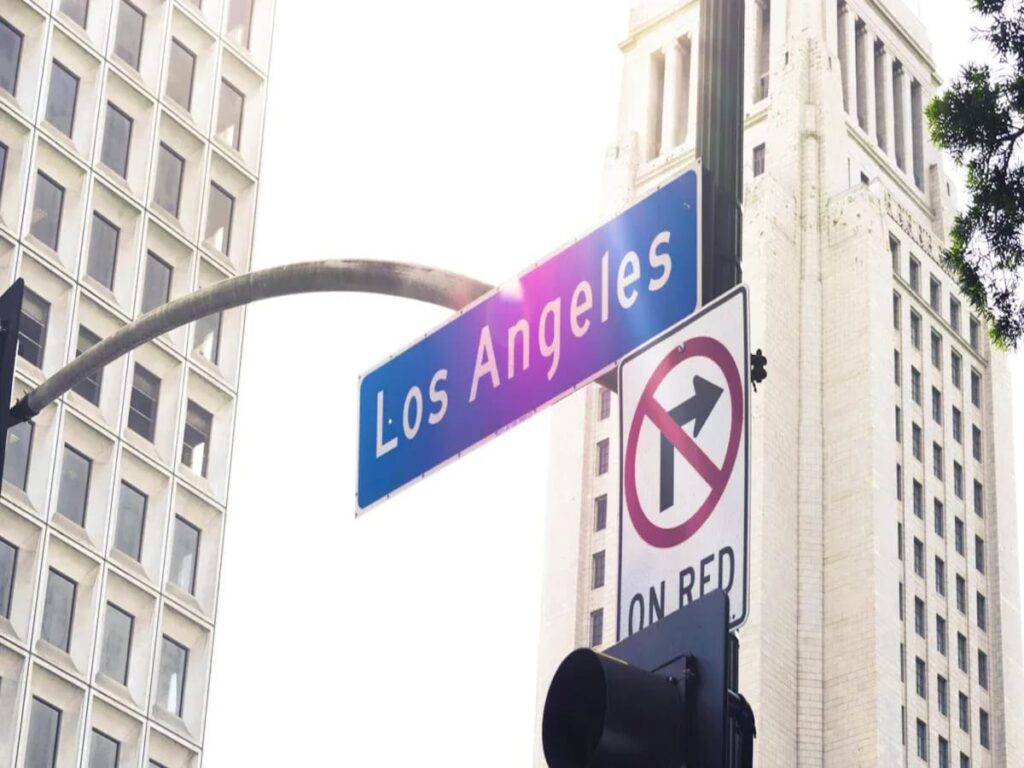
LADOT、スクールゾーンをより安全にするための新しい計画を開始. 彼らは次の場所に赤い標識を立てます 20 学校近くの交差点 2025/2026 学年. これらの計画は、緊急の交通安全問題の解決に役立ちます. ロサンゼルスには約 14.22 毎年各学校で歩行者事故が発生. これは、より良い安全計画が必要であることを示しています. 下の表は、学校付近での自動車事故、歩行者事故、その他の交通問題の最近の件数を示しています。:
| 統計の種類 | カウント |
|---|---|
| 自動車事故の合計 | 62,785 |
| 歩行者事故の合計 | 6,716 |
| 自転車事故総数 | 5,114 |
| ロサンゼルスの学校 | 215 |
| 最も危険な学校 | 23 の 25 |
| 学校当たりの平均歩行者事故 | 14.22 |
これらの計画では、学生の安全を守るために明確な交通安全標識が使用されています. 学生が安全に道路を横断できるようにし、学区内での衝突事故の数を減らします。. オプトラフィック さまざまなものを提供します 交通安全標識 視認性を高め、スクールゾーンの安全性を向上させるように設計されています. 当社の製品, 横断歩道標識も含めて, 速度制限標識, 赤い標識をオンにしてください, ドライバーと歩行者の両方が適切な安全プロトコルに従うことを保証するために重要です. これらの兆候を実践することで、, スクールゾーンをより安全にし、事故のリスクを減らすことができます. 訪問 オプトラフィック 今すぐ当社のスクールゾーン安全製品の全範囲をご覧ください!
キーテイクアウト
- LADOT の「No Turn on Red」計画は、学区をより安全にしようとしています. 彼らはNTORの標識を設置しました 20 歩行者の事故を減らすための交差点.
- 「ターンオン禁止」の赤い標識は、ドライバーが歩行者を監視するのに役立ちます. これにより、学生は交通量の多い道路をより安全に横断できるようになります. 授業時間中に最も役立ちます.
- この計画では通常の標識と変化する標識の両方を使用します. これらの標識は、赤信号で右折できないことをドライバーに知らせます. これにより、ドライバーがルールを守り、人々の安全を守ることができます.
- コミュニティの助けは非常に重要です. NTOR のルールに従って親や近所の人が協力できる. 地元の安全イベントに参加することもできます.
- LADOT は交通量と事故数を調べて NTOR 標識が機能するかどうかを確認します. 学区を安全に保つために必要に応じて計画を変更する.
スクールゾーンでは赤標識点灯禁止
交差点での衝突の危険性
学校近くの赤信号で右折するドライバーが多い, 歩行者にとってさらに危険になる可能性があります. ドライバーは他の車両の確認に集中し、道路を横断する人々に気づかないことがよくあります。. スクールゾーンは特に歩行者が多い, 特に授業時間の前後に. 赤い標識「右折禁止」は、車の突然の動きを防ぐのに役立ちます, 歩行者が不意を突かれるリスクを軽減する.
赤信号で右折を許可する習慣は、1970 年代初頭のエネルギー危機の際に始まりました。. 燃料節約を目的とした. 省エネの原点にもかかわらず, 多くの研究は、赤信号で右折が許可されている交差点では歩行者事故の発生率が高い傾向があることを示しています。. 例えば, a 1984 研究によると、歩行者の衝突事故は増加している 60%, 自転車衝突事故はほぼ増加 100%. より最近の研究, 峯田交通研究所の調査など, 赤信号で右折を許可すると歩行者の危険が大幅に高まることが判明. 研究者らはまた、車両が, 特にピックアップトラックやSUV, 右折事故の死亡率ははるかに高い, このような制限の必要性がさらに高まっている.
The 学校までの安全なルートガイド 長い横断歩道や交通量の多い道路がもたらす危険性も強調します, これにより、生徒が安全に横断することが困難になります. 赤信号進入禁止を導入することで, 都市はスクールゾーンをより安全にし、歩行者が巻き込まれる事故の可能性を減らすことができます.
以下の表は、学校近くの衝突事故の危険性に関する重要な事実を示しています。:
| 調査結果 | 説明 |
|---|---|
| リスクの増加 | 赤道右折が許可されている場所では衝突事故が多発する. |
| 寄与因子 | 人も車もたくさん, 長い横断歩道, 近くに空き地や事業用地があれば、事態はより危険になります. |
| 人口動態への影響 | 障害のある人やさまざまな背景を持つ人は、歩くときにより多くの危険に直面します. |
学校近くの子供たちを守る
スクールゾーンでは歩行者の安全を守るために特別な注意が必要です. 赤い標識が点灯することで、ドライバーは子供たちが横断するのを確認できる時間が増えます. このルールにより、混乱が少なくなり、誰にとっても安全になります. LADOT は学校近くの交通量の多い交差点にこれらの標識を設置しています. これらの場所は最も多くの人が歩いており、さらなる安全性が必要です. 赤い標識は「右折禁止」で、ドライバーに発進前に停止して人を確認するよう促します。. これらの標識によりスクールゾーンがより安全になり、生徒はより快適に歩くことができます. 主な目標は、交差点をより安全にし、学校に登下校する子供たちを守ることです.
NTOR の仕組み
赤の標識の設置基準をオンにしないでください
LADOT はさまざまな点をチェックして NTOR 標識を設置する場所を選択します. 学校に近く、多くの生徒が歩いている交差点を探します。. これらの場所は交通量が多く、横断スポットがたくさんあります. LADOTは古い事故報告書を研究して、子供たちにとって危険な場所を見つけます. 長い横断歩道や見通しの悪い場所がないかチェックします. 彼らは、ドライバーが子供をよりよく発見できるようにする信号を望んでいます.
注記: 1 つの交差点を変更すると、最大で次のコストがかかる可能性があります $400,000. すべてを修正する 90 交差点の費用は以上になります $36 百万. すべてのプロジェクトに十分な資金がない, そこで LADOT は最も重要な場所を最初に選択します.
赤標識通行禁止の実施手順
LADOT はシンプルな計画を使用して NTOR 標識を設置します:
- 彼らは事故件数と学校付近の交通状況を調べています.
- 子どもたちが最も危険にさらされる交差点を選択する.
- 彼らは信号機を設計し、信号機がどこに設置されるべきかを計画します。.
- 彼らは選んだ交差点に NTOR 標識を設置しました.
- 彼らはドライバーがどのように行動するかを監視し、必要に応じて変更を加えます.
この計画は、LADOT が交差点をより安全にするのに役立ちます, 特に学校が開いているときは.
スクールゾーンにおける立ち入り禁止の赤標識の種類
LADOT は交差点で 2 つの主要な NTOR 標識を使用します:
- 静的な兆候: これらの標識は常に点灯し続けます. ドライバーはこれらの場所ではルールに従わなければなりません.
- 動的な兆候: これらの標識は特定の時間にのみ機能します, 放課後と放課後のように. ルールがオンになっている場合はライトまたは画面が表示されます.
どちらの標識タイプも、信号をより安全にし、子供たちを守るのに役立ちます. LADOTは、ドライバーが近づくと簡単に見える場所に各標識を設置します.
赤信号をオンにするオプションはありません
LADOT は、No Turn on Red に対して 3 つの主要なオプションを使用します (NTOR) 学区内での制限. 各オプションはさまざまな交通パターンや安全ニーズに適合します. 正しい選択は何人の生徒が歩くかによって決まります, 一日の時間, 各交差点の危険レベル.
フルタイムの制限
フルタイム NTOR 制限は終日有効です, 毎日. ドライバーはいかなる場合でも赤信号で右折することはできません. このオプションは、歩行者の交通量が多い交差点、または生徒が異なる時間に横断する交差点で最も効果的です。. 常時標識によりドライバーの混乱を解消. 彼らはルールが適用されることを常に知っています.
ヒント: フルタイムの NTOR サインは、早めに到着した学生を保護するのに役立ちます, 遅くまで残る, または放課後プログラムに参加する.
例:
- NTOR が有効になっている: 24 1日時間, 7 週に何日
定時制の授業時間
パートタイム NTOR の制限は、学校の重要な時間帯にのみ適用されます. LADOT は生徒の到着時間と退室時間に基づいてこれらの時間を設定します. 標識には特定の時間が表示される場合があります, 午前送迎、午後送迎など. このオプションにより、授業時間外は交通の移動が維持されますが、学生がいるときは安全性が高まります。.
一般的な時間枠:
- 朝: 6:30 午前 - 9:30 午前
- 午後: 1:00 午後 – 4:00 PM
注記: パートタイム NTOR ルールがアクティブである場合、点滅するライトやデジタル ディスプレイを備えた動的標識が表示されることがよくあります。.
混合アプローチ
一部の交差点では、フルタイムとパートタイムの NTOR ルールを組み合わせる必要があります. LADOT は、交差点の一方の側でフルタイム制限を使用し、別の側でパートタイム制限を使用することができます. このアプローチは、各場所の固有の交通の流れと学生の横断パターンに一致します。.
| オプション | アクティブ時 | に最適です |
|---|---|---|
| フルタイム | 終日, 毎日 | 交通量の多い交差点, 終日のアクティビティ |
| パートタイム | 授業時間のみ | 学生のピーク時間帯 |
| 混合 | 方向によって異なります | 複雑な交差点 |
混合アプローチにより LADOT に柔軟性が与えられます. 各学区のニーズに合わせて NTOR ルールを調整できます.
赤標識通行禁止による歩行者の安全上の利点
交通安全標識で歩行者の視認性を向上
横断歩道の安全性を高める赤標識の禁止. ドライバーは赤信号で停止して待たなければなりません. これにより、人々が横断するのを見る時間が増えます. ドライバーは学校近くの生徒や家族に気づくことができます. 交通量の多い交差点では交通安全標識が目立つ. ドライバーはこれらの標識を見たときにさらに注意を払います. 彼らは前に進む前に人を探すことを知っています.
多くの研究では、これらのルールがクラッシュを減らすのに役立つことが示されています. ダイナミックな赤い標識のある都市で, ドライバーは歩行者をより頻繁に見るようになります. これらの標識は授業時間中に点滅または点灯します. これは、ルールがアクティブであることを示します. ドライバーは速度を落とし、横断歩道にいる人に注意する. これは危機一髪が減り、全員の安全が向上することを意味します.
交通安全標識はドライバーが横断歩道に集中できるようにする. 学校付近の生徒や家族に注意するよう全員に注意を喚起します.
赤標識点灯禁止でスクールゾーンの交通をより安全に
赤色の標識は人々を守るだけではありません. また、スクールゾーン内の交通の円滑化にも役立ちます。. 赤信号で右折できない場合, 突然の動きが少なくなった. これにより、次に何が起こるかを理解しやすくなります. 順番を待つ車たち, そして人々は安全に渡ります.
- ダイナミックサインは、人が近くにいることをドライバーに知らせます.
- ドライバーは速度を落とし、横断歩道で停止する.
- 誰もがルールを知っているので交通安全が向上します.
これらの変更は、学区を静かで整然と保つのに役立ちます. 横断歩道を突進する車が減りました. 生徒たちは安全に登下校することができます. 交通安全チームは、車と人との間のトラブルが減少していると認識しています. これは、学区変更が計画どおりに機能することを意味します.
赤標識を出さずに通学区域に集中する
学生の安全を守るために学区には特別なルールが必要. 学校近くの交通量の多い交差点には「ターンオン禁止」の赤い標識が設置されています. これらの場所には横断歩道がたくさんあり、多くの人が歩いています. 明確な交通安全標識は、ドライバーがいつ停止して人々に注意すべきかを判断するのに役立ちます.
横断歩道のアップグレード, より良い標識や信号が好き, スクールゾーンの安全を助ける. これらの変更は、Vision Zero および Safe Streets Act の目標と一致しています。. どちらのプログラムも衝突事故を減らし、すべての人にとって安全な街路を目指しています。. 赤の標識は、子供たちと家族を保護することで都市がこれらの目標を達成するのに役立ちます.
スクールゾーンの変更が命を救う. 明確な標識と強力な規則は歩行者の安全に大きな違いをもたらします.
以下の表は、これらの変更が学区にどのように役立つかを示しています:
| 介入タイプ | スクールゾーンへのメリット |
|---|---|
| 赤標識点灯禁止 | 横断歩道での衝突事故が減りました |
| 動的な交通標識 | ドライバーは歩行者に早く気づきます |
| 横断歩道の強化 | 学生にとって安全な交差点 |
| スクールゾーンの改善 | すべての人にとってより良い交通安全 |
消灯禁止 赤標識はスクールゾーンの安全のために重要です. クラッシュを減らすのに役立ちます, 生徒を守る, すべての人にとって街路をより安全にする.
学区内の適切な標識の重要性について詳しくは、こちらをご覧ください。, ブログをチェックしてください MUTCD準拠のスクールゾーン標識: 学生の安全を確保するための適切な標識の選択. このガイドは、生徒を保護し、学区を安全に保つために最も効果的な交通標識を選択する方法を理解するのに役立ちます。.
NTOR の影響
衝突データ分析
LADOT はデータをチェックして、NTOR ルールがどのように役立つかを確認します. チームは標識が上がる前と後の事故件数を調査している. 学校付近での歩行者事故や自動車事故もカウントしている. これらの数値を比較すると、安全性が向上したかどうかがわかります. チームはどの交差点で最も問題が多いかを特定します. これは、パターンを特定し、将来のプロジェクトを計画するのに役立ちます. NHTSA や他の都市の調査によると、NTOR 規則によりスクールゾーンでの歩行者の衝突事故が減少することが示されています.
LADOT は実数値を使用して、子供や家族の安全性が向上するかどうかを確認します.
KSI とトラフィック フロー
KSIとは “死亡または重傷を負った。” LADOT は学校付近の KSI 数を数えています. KSI 数値が低いほど、誰にとっても安全であることを意味します. チームはスクールゾーン内で車や人がどのように移動するかを監視しています. 彼らは車が赤信号で停止するかどうかを確認するためにカメラを使用しています. 彼らは人々が安全に道路を横断しているかどうかをチェックします. 交通の流れが良好であれば、ドライバーや歩行者にとって問題が少なくなります。. LADOT は交通渋滞を引き起こすことなくスクールゾーンを安全にしたいと考えています. 安全と移動のバランスを保つために必要に応じて NTOR ルールを変更します.
ドライバーのコンプライアンス
ドライバーのコンプライアンスとは、学校近くの交差点でのルールに従うことを意味します. LADOT はドライバーが NTOR の標識に従っているかどうかをチェックします. 彼らはカメラを使ってルール違反者を監視します, 許可されていない場合に赤で右折するようなもの. コンプライアンスが高いということは、ドライバーが安全規則を知っていることを意味します. LADOT は結果を学校や地域社会と共有します. ドライバーが NTOR ルールに従うことで安全性が向上する都市もある. これは、混雑した学区内で子供たちとすべての歩行者を守るのに役立ちます.
| 評価方法 | それが測定するもの |
|---|---|
| 衝突データ | 歩行者と自動車の衝突事故の数 |
| KSI追跡 | 子供も大人も安全に |
| 交通流の監視 | スクールゾーン内での移動 |
| コンプライアンスチェック | 交差点でのドライバーの行動 |
コミュニティフィードバック
保護者と学校のサポート
保護者と学校職員は「No Turn on Red」の取り組みを気に入っています. 多くの人は、これらの変更により通学区域が歩行者にとってより安全になると考えています. 教師や校長らは、生徒たちは交通量の多い通りを横断することで勇気を感じると語る. 踏切警備員により、車と歩行者との間の危機一髪が減少. 新しい標識はドライバーが学校の近くにいる人に気づくのに役立つと保護者は喜んでいます. 彼らは、これらのルールが子供たちを守り、送り迎えの際に家族が落ち着くのに役立つと信じています。.
「子どもたちには安全に学校に通わせたい」. これらの標識は、ドライバーが標識を見つけて時間内に停止するのに役立ちます,ある親は集会でこう言った。.
住民の視点
地元住民は新しいルールについてさまざまな意見を持っている. 学校近くで事故が減るという理由でこの変更を支持する人もいる. 彼らはより安全な横断歩道を好み、標識は近くにいる人全員に役立つと考えています. 交通問題を心配する人もいる. 住民は交差点で長い車の列を見かけることがある. 右折は赤でドライバーの移動が早くなると言われています. これなし, 交通渋滞がさらに悪化するのではないかと懸念する人もいる.
- 一部の住民は、規則がそうなると考えている:
- 混雑時は交通量を減らす
- 交差点での待ち時間が長くなる
- Make driving harder for people without kids at the school
Addressing Concerns
LADOT listens to all feedback from the community. The team talks with school leaders and residents to find good solutions. They study traffic and change rules if needed. LADOT says the main goal is to keep walkers safe, 特に学校ゾーンで. Officials remind everyone that kids’ safety comes first. They share data showing fewer accidents after the signs go up. 一緒に働くことによって, the community can keep school areas safe and friendly for all.
| Group | Main Feedback |
|---|---|
| 両親 & School Staff | Support for safer crossings and fewer accidents |
| Residents | Mixed views: safety support, traffic concerns |
| Students | Feel safer walking to and from school |
Driver & Parent Guide
コンプライアンスのヒント
Drivers and parents help keep school zones safe. Everyone should look for No Turn on Red signs near schools. ドライバーは赤信号で停止し、青になるまで待ってから曲がらなければなりません. 親は子供たちに横断歩道を使用し、両方向を確認するよう注意させることができます. ドライバーはスクールゾーンの標識を見つけたら速度を落とす必要があります. 歩いたり自転車に乗ったりする生徒に注意する必要がある. 国家安全評議会が新学期中にドライバーにヒントを提供. 彼らは電話をしないようにし、警備員の横断に注意するように言います. ドライバーは横断歩道を決して塞いではいけません. 保護者は子供たちと安全な歩行習慣について話し合うことができます. 学区の規則がなぜ重要なのかを説明する必要がある.
ヒント: 学校の交差点を車で通過する前には必ず生徒を探してください. 細心の注意を払うことで事故を防ぐことができます.
施行情報
LADOTは、ドライバーが学校の交差点で赤信号での右折禁止ルールに従うことを確認します. 警察官は交通量の多い交差点を監視し、規則違反者に切符を渡すこともあります. カメラはドライバーがルールを守っているかどうかを確認し、問題を発見するのに役立ちます. 保護者とドライバーは、危険な運転や標識を見落としたことを LADOT または学校関係者に報告できます。. 学校は家族に新しい交通安全ルールを教えることが多い. コミュニティの人々は、標識に従い、他の人にも同じことをするよう思い出させることで支援できます。.
| 執行方法 | それがどのように機能するか |
|---|---|
| 警察のパトロール | 学校の交差点を監視する警察官 |
| カメラ | 交差点でのドライバーの行動を記録する |
| コミュニティレポート | 保護者とスタッフが問題を報告する |
参加方法
保護者とドライバーは、さまざまな方法でスクールゾーンをより安全にすることができます。. 全国安全な通学路プログラムには家族向けのリソースがあります. パンフレットのようなもの “子どもたちを安全に学校に通わせるために” コミュニティを教える. 多くの学校が新学期の安全イベントを開催し、国際徒歩通学月間に参加しています。. 家族連れでこれらのイベントに参加し、子供たちに安全な歩行や自転車の乗り方を教えることができます。. 人々は学校の交差点でボランティア活動をしたり、安全に関するチラシを配ったりすることができます. 誰もが一緒に働くとき, スクールゾーンが生徒にとってより安全になる.
- 新学期の安全イベントに参加する
- 学校の踏切警備員のボランティア
- 安全に関するヒントを他の保護者と共有する
- 学校の交通安全運動にご協力ください
「赤信号禁止」ルールでスクールゾーンがより安全に. これらのルールにより、車に轢かれる人の数が減ります. 学校の近くで子供たちの安全を守るのに役立ちます. LADOT は各学校の安全と交通を頻繁にチェックします. チームはドライバーの視界を良くするために明るい標識と停止バーを使用しています. 一部のドライバーは NTOR の標識に従わない. ドライバーにこれらのルールを教えることで、より多くの人が従うようになります. LADOT は学校に新しい安全なルートと安全計画を追加したいと考えています. 市はスピードカメラと交通安全のための新しいアイデアを活用する. 地域社会が学校の安全をサポートすることが重要です. フィードバックを提供し、積極的に活動を続けることで人々を助けることができます.
- 赤信号で車を右折させると、歩いている人にとって危険になる可能性がある.
- 21% のドライバーは、できる限り NTOR の標識に従わない.
- 23% 右折・赤信号違反の増加により、歩行者に問題が発生.
- これを解決する良い方法は、明るい NTOR 標識と停止バーです。.
- 学校のための新しい安全なルート
よくある質問
どういうことですか “赤信号でターン禁止” 学区内の意味?
“赤信号でターン禁止” ドライバーは特定の交差点で右折する前に青信号を待つ必要があることを意味します. このルールは、学校近くの道路を横断する生徒や家族を守るのに役立ちます.
NTOR ルールが適用される場合、ドライバーはどのようにしてそれを知るのでしょうか?
ドライバーは交差点に設置された明確な標識を目にすることができます. 一部の標識は一日中点灯します. 授業時間中にルールが有効であることを示すために、点滅するライトやデジタル ディスプレイを使用する人もいます。.
LADOTがこれらを選んだ理由 20 交差点?
LADOT は、歩行者交通量と過去の事故報告が多い交差点を選択しました. チームは、学生が最も頻繁に横断する場所と、安全性の向上が最大の効果をもたらす可能性がある場所に焦点を当てました。.
NTOR の兆候について親は子供に何を伝えるべきか?
親は子供たちに横断歩道を使用し、信号を待つよう注意すべきです. NTOR の標識は、ドライバーに停止して横断する人々を確認させることで全員の安全を守るのに役立つことを説明する必要があります。.
